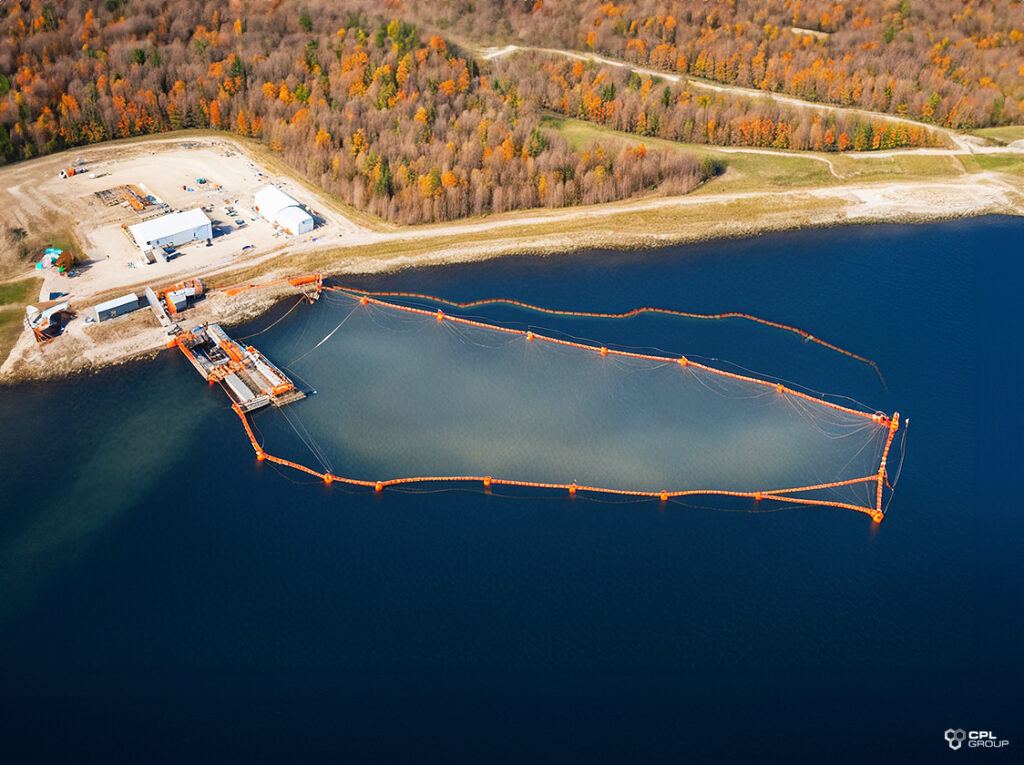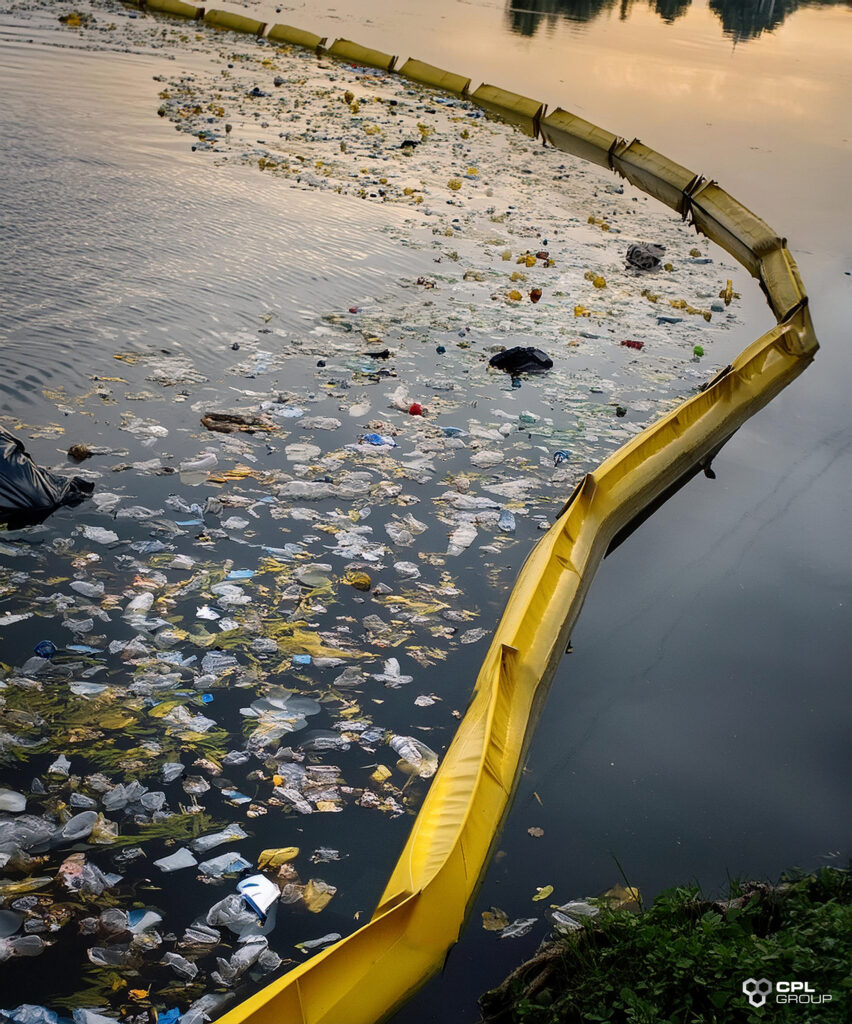
Essential Barriers and Curtains for the Oil, Gas, and Water Industries: A Focus on ESG

In the oil, gas, and water industries, managing environmental impact is crucial. The role of various barriers and curtains, such as floating silt curtains, sediment control barriers, chemical splash curtains, and decontamination curtains, cannot be overstated. These solutions not only ensure regulatory compliance but also align with Environmental, Social, and Governance (ESG) goals, promoting sustainable and responsible operations.
Floating Silt Curtains
Floating silt curtains are essential in containing suspended sediments during dredging and construction activities in water bodies. By preventing the spread of silt, these curtains protect aquatic ecosystems and maintain water quality.

Importance in Oil, Gas, and Water Industries:
- Oil Spills: Floating silt curtains help contain oil spills, preventing contamination of marine and freshwater ecosystems.
- Construction Projects: In water infrastructure projects, these curtains ensure minimal impact on surrounding water bodies, maintaining ecological balance.
ESG Alignment:
- Environmental Protection: By mitigating water pollution, floating silt curtains contribute to preserving aquatic habitats and biodiversity.
- Regulatory Compliance: These solutions help companies adhere to environmental regulations, showcasing their commitment to sustainable practices.
Sediment Control Barriers
Sediment control barriers are designed to manage soil erosion and prevent sediment runoff into water bodies. They are vital in construction sites, especially those near rivers, lakes, and coastal areas.

Importance in Oil, Gas, and Water Industries:
- Pipeline Projects: During pipeline construction, sediment control barriers prevent soil erosion, protecting water quality.
- Site Remediation: In contaminated sites, these barriers ensure sediments do not carry pollutants into nearby water sources.
ESG Alignment:
- Water Quality Management: By controlling sediment runoff, these barriers protect water resources, aligning with environmental stewardship goals.
- Community Impact: Reducing sediment pollution benefits local communities by maintaining cleaner water sources.
Chemical Splash Curtains
Chemical splash curtains provide a protective barrier to contain hazardous chemicals during industrial processes. These curtains are critical in safeguarding both the environment and human health.

Importance in Oil, Gas, and Water Industries:
- Chemical Handling: In facilities where chemicals are stored or handled, splash curtains prevent accidental releases from spreading, mitigating environmental damage.
- Safety Measures: These curtains are vital in areas prone to chemical spills, ensuring a safer working environment.
ESG Alignment:
- Environmental Safety: By containing chemical spills, splash curtains protect ecosystems from hazardous contamination.
- Worker Safety: These solutions also enhance workplace safety, promoting social responsibility and employee welfare.
Decontamination Curtains
Decontamination curtains are used in areas where contamination control is paramount. They create isolated zones for decontamination processes, ensuring contaminants do not spread to clean areas.

Importance in Oil, Gas, and Water Industries:
- Site Cleanup: During decontamination of polluted sites, these curtains provide controlled environments, ensuring effective cleanup.
- Operational Safety: In facilities dealing with hazardous materials, decontamination curtains are crucial in maintaining safe operational zones.
ESG Alignment:
- Pollution Control: Decontamination curtains help in effective pollution control, aligning with environmental protection goals.
- Health and Safety: By ensuring safe decontamination processes, these curtains contribute to the health and safety of workers and surrounding communities.
Pollution Prevention and ESG Goals
The implementation of floating silt curtains, sediment control barriers, chemical splash curtains, and decontamination curtains directly supports several key ESG goals related to pollution prevention:

Environmental Sustainability
Pollution prevention is at the core of environmental sustainability. By reducing contaminants entering the air, water, and soil, these barriers and curtains help preserve natural ecosystems and biodiversity. This not only protects wildlife but also ensures the long-term viability of natural resources, which are critical for future generations.
- Reducing Water Pollution: Floating silt curtains and sediment control barriers prevent harmful sediments and pollutants from entering water bodies, thus maintaining water quality and protecting aquatic life.
- Minimizing Soil Contamination: Sediment control barriers and decontamination curtains prevent the spread of contaminants, ensuring that soil remains fertile and safe for vegetation and wildlife.
- Preventing Airborne Contaminants: Chemical splash curtains contain hazardous chemicals, reducing the risk of airborne pollutants that can harm both the environment and human health.
Compliance and Risk Management
Adhering to environmental regulations and standards is essential for managing risks and avoiding legal repercussions. The use of these barriers and curtains demonstrates a company’s commitment to regulatory compliance and proactive risk management.
- Meeting Regulatory Standards: Implementing these solutions helps companies meet local, national, and international environmental regulations, showcasing their dedication to legal compliance and responsible business practices.
- Reducing Liability: By preventing pollution, companies minimize the risk of fines, penalties, and reputational damage associated with environmental violations.
Community and Social Responsibility
Companies in the oil, gas, and water industries have a responsibility to the communities they operate in. Pollution prevention measures contribute to social responsibility by ensuring that local environments remain safe and healthy.
- Protecting Public Health: By reducing pollutants in air and water, these barriers and curtains help protect public health, particularly in communities located near industrial sites.
- Enhancing Quality of Life: Clean air, water, and soil contribute to a higher quality of life for community members, promoting overall well-being and social harmony.
Governance and Transparency
Strong governance involves transparent reporting and accountability regarding environmental impact. The use of pollution prevention measures like barriers and curtains reflects a company’s commitment to transparency and ethical business practices.
- Transparent Reporting: Companies can report on their use of these solutions in sustainability reports, demonstrating their efforts to minimize environmental impact and promote transparency.
- Ethical Practices: Implementing these measures reflects a commitment to ethical operations, enhancing the company’s reputation and building trust with stakeholders.
Key Takeaways
The use of floating silt curtains, sediment control barriers, chemical splash curtains, and decontamination curtains in the oil, gas, and water industries is critical for maintaining environmental integrity and ensuring safety. These solutions not only help companies comply with regulatory standards but also align with ESG principles, promoting sustainable and responsible industrial practices. By integrating these barriers and curtains into their operations, companies can significantly reduce their environmental footprint, contribute to pollution prevention, and support the broader goals of environmental sustainability, social responsibility, and strong governance.


